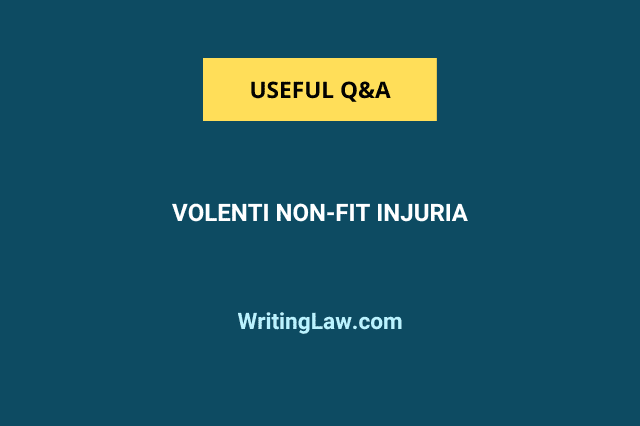
This short law article tells you about volenti non-fit injuria as per the Law of Torts and shares its exceptions and relation with the Indian Penal Code (IPC).
Definition of Volenti Non-Fit Injuria
The literal meaning of the volenti non-fit injuria is “to a willing person, injury is not done”. When one person is aware of the risk involved in an event and still continues to engage in it, then he cannot claim the damages from the other person, and the defendant is discharged from his liability.
The volenti non-fit injuria is one of the general defences given to the defendant to protect himself from the allegations of the defendant. This theory prevents the plaintiff from exploiting the respondent and protects the defendant from being alleged for a wrong that he has not committed.
Essential Ingredients of Volenti Non-Fit Injuria
- Plaintiff is aware of the risk involved.
- Aware of the risk, the plaintiff still agrees to engage and suffer the harm.
Since it is a defence given to the defendant, the burden of proof lies on the defendant to successfully avail the benefit of the defence. The defendant must prove that the plaintiff was just not only aware of the possible occurrence of the harm but also consented to engage in one. If the defendant succeeds, then he gets discharged from his liability. The consent of the plaintiff can either be expressed or implied, and it must be free consent.
If the consent obtained by the plaintiff is not free or is out of force, fraud, or any mischievous ways, and is obtained through fraud, coercion, misrepresentation, undue influence or mistake of law or fact, then the defendant cannot take the defence due to the defendant being the wrongdoer in the first place. To take the defence, the defendant must be free of any guilt.
Exceptions to Volenti Non-Fit Injuria
There are some exceptions to the applicability of the volenti non-fit injuria, where the defendant cannot avail the defence of volenti non-fit injuria even if he is in the position to take it (even if prima facie it seems legit):
- Rescue cases: A situation where the plaintiff does an act of helping (rescuing) someone by his own will and consequently suffers an injury, even then, the said defence will not apply, and the defendant will be held liable.
- Illegal conduct: If the plaintiff and the defendant are involved in any illegal activity, which is an offence in the eyes of the law, then the defence will no longer be available.
- Defendant himself is negligent: If there is any negligence act done on the part of the defendant and the plaintiff suffers harm, then the defendant cannot take the defence and has to compensate the plaintiff for the injury caused to him.
Relation of Volenti Non-Fit Injuria With IPC
Section 87 of the Indian Penal Code, 1860, is also based on the principle of volenti non-fit injuria. The section states that if the person has given his consent to a particular event and consequently suffers harm, he would not be eligible enough to hold the person liable for the harm suffered by him.
In short, the volenti non-fit injuria is a defence available to defendants but with certain limitations to its applicability. While granting the judgement of defence to the party, the court must ensure that basic requirements are fulfilled, and the cases do not fall under any exception of the defence.
Read Next:
1. Top Legal Maxims for Law Exams
2. What Is Strict Liability and Absolute Liability
3. Read All Torts Law Notes
- What Does “Justice Delayed Is Justice Denied” Mean? - 28th April 2023
- What Is Volenti Non-Fit Injuria Under the Law of Torts? - 25th April 2023
- What Are the Differences Between Possession and Custody? - 24th April 2023







